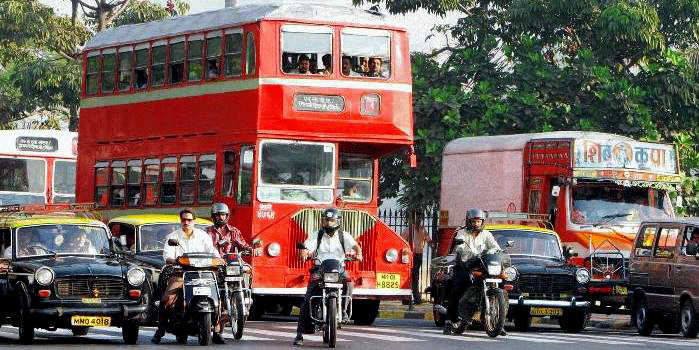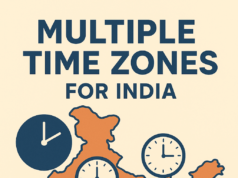Capitalism first emerged in England. The pre-modern form of capitalism shared many features with capitalism in its contemporary form and the capitalist economic system arose largely without intervention from the state. Capitalism in fact was a revolutionary force that challenged the entrenched feudal order. Naturally, its staunchest opponents became reactionary nobility, who ended up losing their power and stronghold under feudalism. Capitalism evolved spontaneously, except for some states like Prussia and Japan where its emergence was controlled to be slow and deliberate.
Atul Kohli’s book State-Directed Development has an interesting perspective on the role of state in steering capitalism. Kohli is a political scientist and professor at Princeton University, known for his research on political economy and development, particularly on the global South. The book can help understand the relationship between India’s development trajectory and its political system.
The author categorises state structures into three main types: Neo-patrimonial, Cohesive-capitalist, and Fragmented-multiclass.
Nigeria for instance, is an example of a neo-patrimonial state, where state resources are treated as personal property by leaders and bureaucrats. This structure in the author’s view is “non-modern” and unsuited for development.
Examples of the cohesive-capitalist state can be seen in South Korea and Brazil. They have features of a centralised authority working with the elites to pursue capitalist goals. Though capitalist, these states are often characterised by repression, nationalism, and militarism. The author labels them “neo-fascist.” The state in these nations plays a leading role, with elites in a secondary but cooperative position.
A fragmented-multiclass state looks like India, where authority is more dispersed. Governments in these states maintain power through diverse alliances and are accountable to the people. The author finds such a state structure to be closer to a liberal democracy, where leaders must balance competing interests.
The nature of the state that evolved in every nation has deep ties to its history. Nations that witnessed an early evolution and adaptation of capitalism, went on to colonise other states that did not transform into capitalist societies. After World War II, developed capitalist nations remained far ahead of newly independent underdeveloped nations despite the destruction they faced in the wars.
Underdeveloped nations after getting rid of colonisation, faced an immense task of catching up with developed economies and were under the pressure to catch up, rapidly. Enlightened leaders of these nations recognized the need for quick economic growth. Unfortunately, they just could not “let things happen”, thus leading to state-led development.
Case studies in the book suggest that cohesive-capitalist states are more successful in achieving rapid development. The East Asian miracle, where unprecedented growth occurred in countries like South Korea, illustrates this phenomena. China, though classified as a cohesive-communist state in the book, exhibits the same characteristics of a cohesive-capitalist state. In a similar sense under the semi-dictatorial rule of Sheikh Hasina, Bangladesh also achieved its fastest growth, briefly surpassing India’s GDP per capita. This suggests that more centralised, cohesive models might yield faster results. But the author accepts that such an argument may appear to endorse neo-fascism, but he proposes states to take the path of liberal democracy despite its slower decision-making processes.
The chapter on India is titled “Slow and Steady,” and it reflects the importance of this gradual growth. The author’s analysis of India’s performance is fair. Jawaharlal Nehru, who was influenced by the prevailing ideas of command and control economics and had a suspicion for western capitalism, made decisions that can be seen to be prudent for his time. Indira Gandhi’s tenure, however, is largely seen as a disaster, especially during the Emergency years when India steered towards authoritarianism. The book helps the reader answer an important inquiry: Does India’s slower pace of growth reflect the failure of liberalism?
In the late 1980s, with multiple insurgencies, religious polarisation, and a bankrupt economy, many believed India was on the verge of collapse. Yet, under a septuagenarian prime minister, P.V. Narasimha Rao, who had little mass appeal, India managed to turn things around. Rao managed to change India’s course of history under a coalition government by carrying out liberalisation reforms in 1991. This speaks to the importance of a persistent order of liberal democracy.
It’s also possible for the liberal path to reverse. Economist Viral Acahrya notes how the Indian corporate structure has started resembling the state-elite coalition of Korean corporates called chaebols. India, it seems, is shifting towards a cohesive-capitalist society.
The General elections of 2024 saw the loyalists of Gandhi family and other caste-based groups form an alliance to form a stronger opposition in the Parliament than in the recent past. An optimistic view here may see that liberal democracy triumphed once again, rejecting repression in favour of plurality, even at the cost of growth as promised by the ruling party.
India is an example of a country where economic growth and liberal democracy coexist. For liberalism to be seen as a viable alternative to neo-fascism in the underdeveloped world, India’s economic success must continue without succumbing to authoritarianism. India’s journey shows that development is possible without sacrificing liberal principles.
Post Disclaimer
The opinions expressed in this essay are those of the authors. They do not purport to reflect the opinions or views of CCS.





